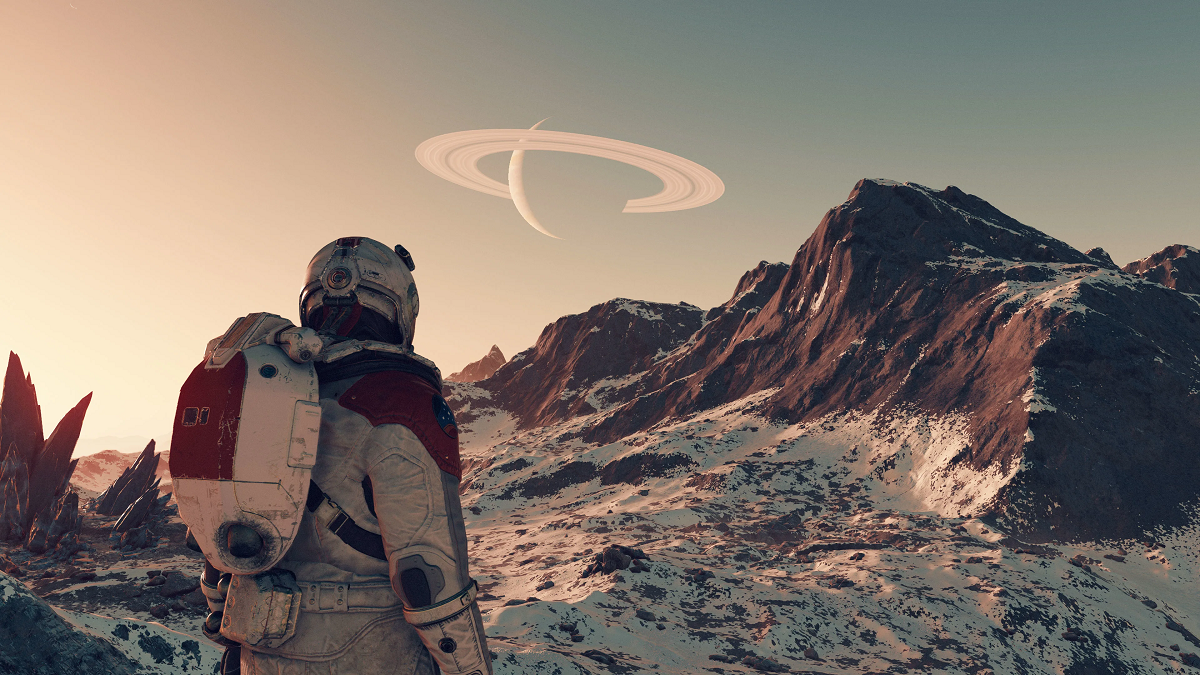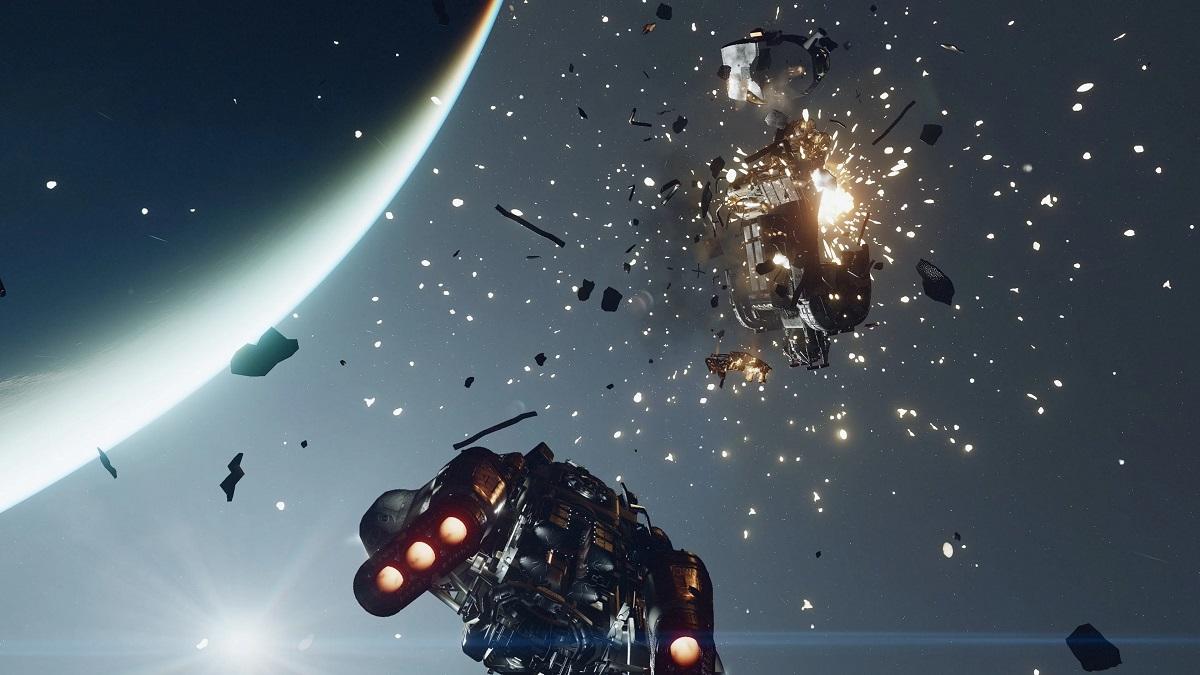Starfield Review: Space to Grow
Starfield isn't everything we expected it to be, but it's still a compelling Bethesda RPG.
During my time with Starfield, I've gotten lost in caves and abandoned research facilities for no real reason at all, only to come out much richer with off-the-books "quests" completed and a more fleshed-out world to show for it. I've also gone up against more bullet sponges than I care to recall, with some enemies floating away comically in a low-gravity environment after a single smack while others soaked up shotgun shells like their spacesuits were as alien as some of the lifeforms you'll come across. Across those journeys, I've experienced the highs and lows of companionship, such as finding the perfect crewmate only for them to end up abandoned when they returned home bugged and unable to speak. Suffice it to say, Bethesda is definitely back.
Back, sure, but is Starfield better than what's come before it? Is it better than The Elder Scrolls or Fallout, to the point that it needs to be its own series? It doesn't have to be better to be successful, and it's still the compelling Bethesda RPG people have been waiting for, but it ultimately doesn't make any great strides to advance Bethesda's already-strong legacy.
Wide-Open Spaces
I haven't beaten Starfield's main story yet, but then again, games like Starfield and Skyrim and Fallout 3 aren't really made to be "beaten" anyway. They're meant to get lost in, to be played for hundreds of hours over time, and to find something new in every playthrough that wasn't present in the last. So, in favor of the main narrative, I ventured out on my own as soon as possible, just as many players will, to see what Starfield's hyped-up planets had in store.
The first one I landed on may as well not even have had a name because of how little there was on it. Surveying for flora, fauna, and other resources with a hand scanner kept me busy between points of interest that consisted of caves, natural structures built up over who knows how many years, and an occasional scuffle with pirates who'd holed up in abandoned buildings. A relatively lukewarm experience overall, but one where the freedom to do that at any point I wanted was appreciated.
After getting too antsy to bring 100% of the planet's survey (by Starfield's metrics of surveying a planet, not traveling it all on foot), I set off to a neighboring planet to see what it boasted. It was much of the same. A passive creature battling with a more aggressive one, minerals to stash in a cargo hold, and a settlement that needed my help.
After seeing those, it made sense why Bethesda tempered expectations for the 1,000s of planets in Starfield by reminding players that life isn't all that prevalent out in the big unknown. That's understandable, but what was disappointing about the exploration was finding exact repeats of points of interest on planets with nothing to do upon visiting them except to check a location off your list and grab some medium-tier loot for your troubles. Imagine the irony of looking through three caves empty of all life only to find some semi-rare minerals and a literal dung pile that had some odd loot in it.

Following the Stars
So, that exploration tactic didn't work too well, but what did work was following a loosely guided tour of the cosmos by choosing sidequests that took you to one or two specific planets or mega-cities and branching out from there like a starry spiderweb. It kept me more tethered in my explorations with a hub area to return to and offload my treasures and kept me from feeling like the next planet I threw a dart at would be a bust as well.
To Bethesda's credit, its cities have always been high points of its games, and the same was true for Starfield. Neon was a favorite of mine, a planet that I gravitated towards right from the start after picking a background trait that made it so that my character called Neon home. A gritty mix of Cyberpunk 2077 and Fallout where gangs vie for control of the city, megacorps compete for your money, and bounty hunters solemnly survey the streets is a roleplayer's paradise and was a hub I found myself returning to again and again for repeat quests and commerce. Annoyingly enough, Starfield's local maps aren't very helpful at all, but the streets and vendors of Neon and other notable settlements like the Old West-style Akila City quickly became committed to memory.
The journey to these planets is another story entirely. Starfield's balance between fantasy and realism means that traveling from one planet to the next takes a really, really, really long time to the point that no reasonable person would choose to do that for a playthrough unless it was a self-imposed challenge, so fast-traveling is the way to go. Unfortunately, that very quickly leads you to a pitfall that other series like Fallout and The Elder Scrolls could avoid by making players travel on foot for the most part. Starfield rapidly ends up being a game of fast-traveling from one point to the next, a tactic that's hard to ignore when "show on map" takes you to your destination in a few seconds flat. The vastness of Starfield certainly allows for plenty of options, but in doing so, it struggles to make the world feel interconnected in a way beyond visiting one spaceport after another.
The Future of Combat
Where combat's concerned, Starfield again finds itself torn between the fantasy of exploring space and grounding itself in what's known and what's assumed. I went into Starfield with hopes of crafting a melee-oriented build outfitted with a futuristic whopping-stick that'd put Fallout's Super Sledges to shame and found only excruciatingly boring melee weapons. Swords, knives, and other bladed armaments made up the bulk of my finds – scrolling through vendors' inventories often ended in a sigh after finding nothing to benefit my build. To make things worse, Starfield has no melee mods – only random modifiers found on melee weapons out in the wild, but nothing you can control yourself.
Guns are a different story, to a degree. There are particle-beam weapons and electromagnetic blasters and mods where you can set your weapon to be non-lethal for some creative combat options, but I ironically found myself gravitating towards the "Old Earth" weapons like shotguns and hunting rifles, again leaning into the roleplaying aspect of Starfield. Some of those weapons just felt right to me while others who invest more heavily in the scientific weaponry skills will find the pew-pews are more their speed, and that's something that Starfield supports throughout. Some weapons do more damage while in space versus while you're on a planet, some do more against humans than aliens and vice versa, and others deal random elemental damage. Starfield's got options for pretty much every build as long as you're not leaning toward melee. Jetpacks only enhance those builds – there's not been one moment in Starfield's combat that wasn't improved with a jetpack.
As for the space combat, there's unfortunately not much to speak of. It's perfectly fine but has no wow factor, and aside from the dizzying options when building a ship, it's perfectly serviceable considering how this is something people would never typically associate with Bethesda. Like many parts of Starfield, it's clunky and slow in the beginning, but after investing a few points in the techier side of your build, you'll be obliterating enemy ships in no time. Despite not being terribly innovative compared to other games that have had far more experience in this area, the space combat of Starfield was something I continually looked forward to and sought out for easy experience and loot. Jumping from one star system to the next in hopes that my "Wanted" background trait would invite an encounter with a bounty hunter, only for me to disable their engines, board their ship, and take it for my own was a high point of Starfield no matter what level I was.

Parts Unknown
My opinion of Starfield is overall high despite what the many criticisms outlined here might suggest. It's a Bethesda RPG, and even Bethesda's middling options blow competitors out of the water when it comes to choice and freedom, so Starfield was always going to be a success. Whether it's enough of a success to uplift Xbox and make someone buy a new console is another discussion, but Starfield itself is perfectly competent and – dare I say it – fun, and even the most frustrating moments were unable to deter me from wanting more.
Starfield itself is something totally new for Bethesda, since it's the first new universe the company's worked on in decades, and it'll lean on the successes of the past to build another winning formula. A new encumberment system that penalizes your health and not your speed is an example of this evolution, but when you hear lines from medical vendors that sound, at times, identical to the phrases you'd hear nearly eight years ago in Fallout 4, it's difficult sometimes to not feel like you're playing a heavily modded Fallout.
If it seems like I'm being hard on the game, it's because I (and others) expect a lot from Bethesda by now, and not all of those expectations were met. Despite all that, I still look forward to playing Starfield again. I considered starting over numerous times, not out of frustration, but because of that itch in the back of your mind that entices you to explore other builds and paths, so I look forward to seeing what those experiences look like from myself and others once more of Starfield's mysteries are unraveled.
Score: 4/5
A review copy of Starfield was provided by the publisher, and the game was reviewed on the PC platform.
5comments